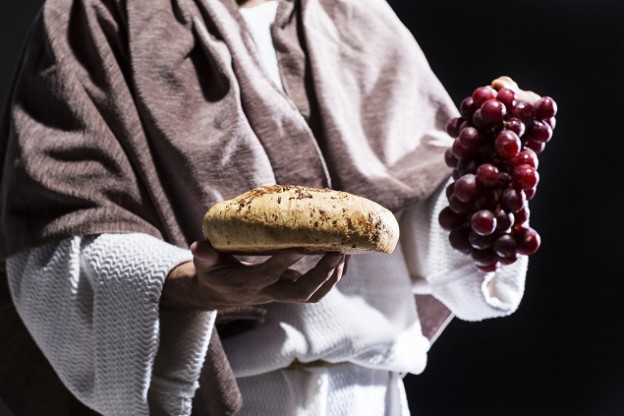As a vocalist, I know correct rhythm is essential. If I expect people to learn songs and sing along on Sunday mornings, I have to sing correct rhythm every time. Rhythm is a pattern, an organized structure for notes in a song. Yet sometimes, when you intentionally change the rhythm in a song, it creates interest and meaning. I like to think of the order of a worship service as a rhythm. People learn the patterns of worship and participate when there’s an organized structure. But, when you’re intentional about rhythm change, you create interest and meaning.
Our current worship series at our church’s offsite worship service is called “Breaking Bread.” We found that many times when Jesus taught or did a miracle, it began around a meal. There’s the wedding at Cana, the feeding of the 5000, and an encounter with the Risen Christ on a beach when he grills fresh fish. Of course, there’s the story of the upper room, where Jesus gave the Passover feast a new meaning. Our scriptures are full of stories of life change that begin with a conversation at a table.
We based our series planning around these stories. As we do with each series we plan, we considered what our stage should look like. We meet in a college auditorium, with a large blank stage. For this series, a set designer built a beautiful dinner table with two long benches. The table was set with rustic burlap, pumpkins, and candles.
One of the things I love about planning worship in a non-traditional setting is the freedom to create. I enjoy the challenge of introducing Jesus in new ways, using current technology, modern words and songs, and original expressions of art and space. Occasionally, when I consider new options, I forget the things that seem the most obvious really are the best things.
In this case, I was overlooking the communion table. Usually, we gather around the communion table once every four to six weeks. This is the rhythm with which most of the leaders on our planning team are familiar. But, what if we intentionally changed the rhythm of our communion service for this series, “Breaking Bread?” What if we shared communion every Sunday? Wouldn’t it make sense to invite people to gather around this beautifully set table and actually break bread together? What could draw people into experiencing the depth of God’s love more than meeting Jesus in the mystery of bread and wine, broken and shed for them?
So, we changed the rhythm. We’ve gathered around the table for communion every Sunday. Our new pattern of communion has been comforting and confrontational. It both welcomes us before God and reminds us of our sinfulness. The Divine confronts our humanness and compels us to follow Him.
While we observe this traditional meal, we’ve found the space to be creative in the details. Each week, one of our attenders makes homemade bread. One week, there was a bread machine in the lobby. People smelled bread baking before they entered the auditorium. When our pastor stood over the table and broke the bread that morning, you could see steam rise up from the inside the loaf. It ascended like an Old Testament offering to God!
Another week, we asked our attenders to read along with the formal liturgy, something used in our sanctuary services but not in our offsite service. Our officiant explained the responses before he asked the people to read the words. Afterward, many people said they had not had the liturgy explained to them before. They found it made the experience of coming to the table more meaningful.
Another place to be creative has been asking people who’ve never served communion to be communion servers. As we’ve asked people to serve, we’ve found that for some, it’s intimidating. They need encouragement to know they don’t have to be perfect or worthy to serve communion. We’ve also found that after the experience of serving communion, people have described it as “powerful” and “an honor.” Repeating the words, “the body of Christ, broken for you” and “the blood of Christ, shed for you” is transforming, not only for the person receiving the bread and juice, but also for the person serving it.
A memorable day was when we invited children to serve communion. At each communion station a child held the bread, another child held the cup, and an adult supervised, just in case anybody needed help. It is humbling to have a child, with all his innocence, speak to you about the gift of Christ’s broken body. (And if he also remarks about how crusty the bread is, that just keeps it real!)
The worship service at your church has a certain rhythm, as it should. If you have a chance, change the rhythm for a season. Maybe for you it’s not communion, but it’s adding a responsive reading, creating a space for prayer, or relearning an old song. Don’t overlook the obvious elements. Be creative in the details. May God use the variance in rhythm to create meaningful and memorable worship experiences for his people.
Image attribution: camaralenta / Thinkstock



